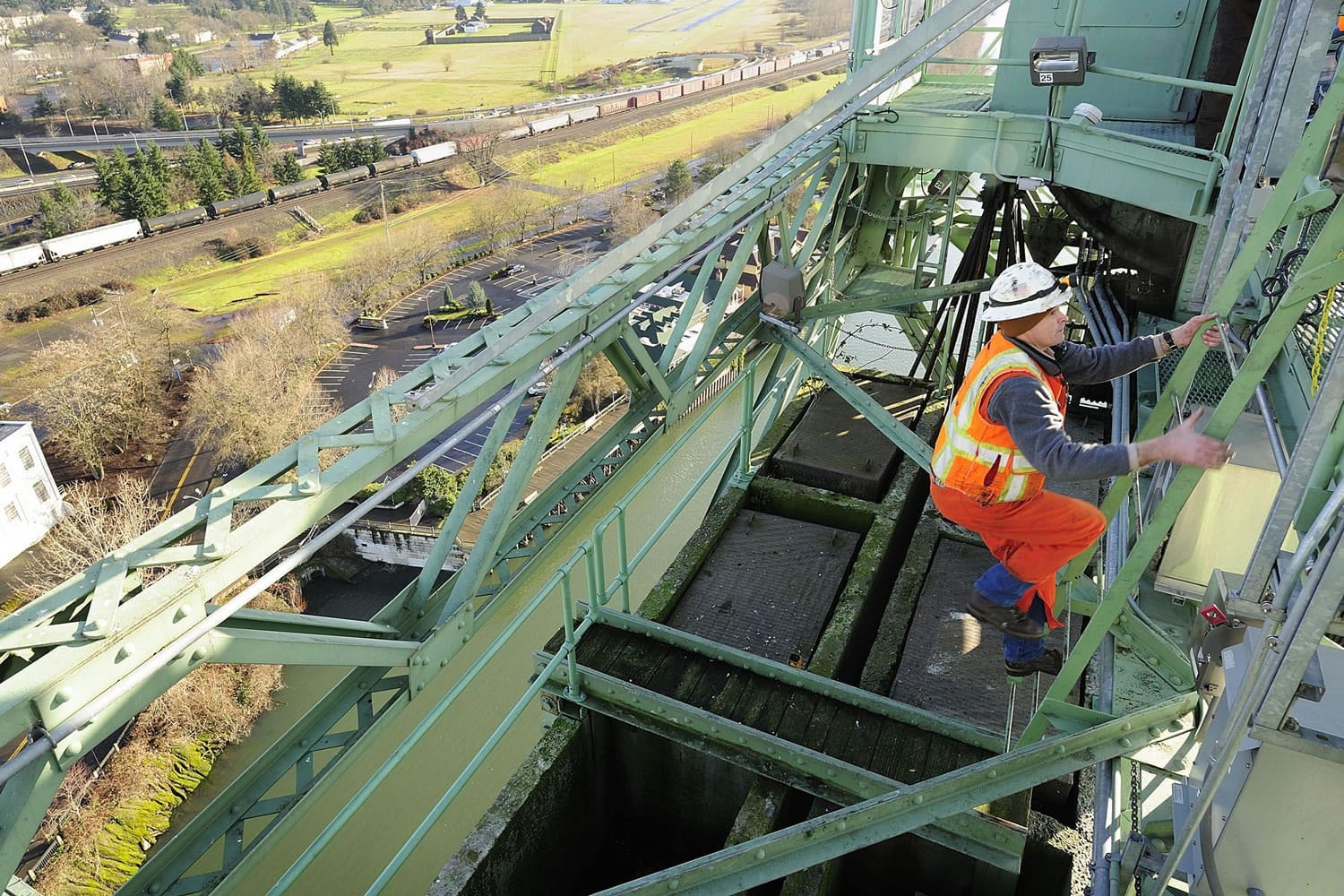Traffic stood still. Lights flashed. The typical din of a busy freeway fell silent.
Standing on the northbound deck of the Interstate 5 Bridge, Marc Gross raised a radio to his mouth. The Oregon Department of Transportation bridge supervisor called one of his crew mates back in the bridge house.
“James, we are all clear,” Gross said.
Just like that, Gross and a small group standing with him began a slow, remarkably smooth ride toward the top of the twin spans that carry one of the Northwest’s main arteries across the Columbia River between Vancouver and Portland.
There was more than one reason for this bridge lift. First, crews held the span steady at 90 feet while a barge passed underneath. Then, Gross and bridge coordinator Ryan Cox went to the top of the bridge’s 239-foot towers to install an anti-starling air cannon and replace a light bulb. They also took a small group of local media — including two Columbian staff members — along for the ride.
There’s more than one way to reach the top of the I-5 Bridge’s towers. On the way up, Gross and Cox took advantage of the bridge’s mechanics and skipped the stairs.
Each time the bridge decks rise, concrete counterweights simultaneously lower along huge cables connecting them. It takes a lot of mass to keep the equation in balance — the northbound lift span, for example, weighs 1,800 tons. The two counterweights connected to it weigh 900 tons each.
When the bridge sat level with those weights, Gross invited the group to step onto one of the counterweights themselves. They simply rode it the rest of the way to the top as the bridge deck moved back down. But this was no leisurely elevator ride — each person took care to stay inside the guard rails with only inches of clearance on each side. Near the top, Gross made sure everyone was positioned correctly to avoid bumping heads on the steel support bars that came down to about chest level. By this time, freeway traffic started moving again. The entire structure resumed its normal shaking and vibrating.
The trip back down was less cushy. They took the stairs.
Where do I park my horse?
If plans to toll the I-5 Bridge go forward to pay for its multibillion-dollar replacement, it won’t be the first time users pay a fee to cross the Columbia River. The same bridge was also tolled after the second (southbound) span opened in 1958, and after the first span opened 95 years ago.
The traffic load, however, has changed a bit since then. The original 5-cent toll in 1917 didn’t just apply to vehicles. It also applied to “each person riding on an animal,” according to ODOT.
Off Beat lets members of The Columbian news team step back from our newspaper beats to write the story behind the story, fill in the story or just tell a story.




